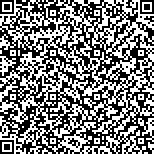| 引用本文: | 张武昌,陈雪,李海波,王超锋,梁晨,张珊,肖天.海洋浮游纤毛虫摄食研究综述.海洋与湖沼,2016,47(1):276-289. |
| |
|
| |
|
|
| 本文已被:浏览 1697次 下载 1895次 |

码上扫一扫! |
|
|
| 海洋浮游纤毛虫摄食研究综述 |
|
张武昌,陈雪,李海波,王超锋,梁晨,张珊,肖天
|
|
中国科学院海洋研究所海洋生态与环境科学重点实验室,中国科学院海洋研究所海洋生态与环境科学重点实验室; 中国科学院大学,中国科学院海洋研究所海洋生态与环境科学重点实验室; 中国科学院大学,中国科学院海洋研究所海洋生态与环境科学重点实验室; 中国科学院大学,中国科学院海洋研究所海洋生态与环境科学重点实验室; 中国科学院大学,中国科学院海洋研究所海洋生态与环境科学重点实验室,中国科学院海洋研究所海洋生态与环境科学重点实验室
|
|
| 摘要: |
| 海洋浮游纤毛虫是海洋微食物环的重要组成部分,同时也是连接海洋微食物环和经典食物链的重要环节。研究海洋浮游纤毛虫的摄食情况对了解海洋浮游纤毛虫在海洋浮游生态系统物质循环和能量流动中的作用有重要意义。主要研究内容包括纤毛虫的食性、纤毛虫对不同饵料的摄食强度(摄食率、清滤率)和选择性、影响摄食的因素及摄食后的同化和排遗。海洋浮游纤毛虫食性的研究方法主要有两种,分别为体内饵料颗粒法和维持生长法。实验室内估算纤毛虫摄食率和清滤率主要有两种方法,分别为饵料浓度差减法和体内饵料颗粒增多法。可以用特定体积清滤率和特定生物量摄食率来比较不同种纤毛虫的清滤率和摄食率。已有研究结果表明,纤毛虫的饵料包括较小的纤毛虫、硅藻、甲藻、鞭毛虫、聚球藻、原绿球藻和细菌等。纤毛虫的摄食率范围为0.1-920 cells/(ciliateh),清滤率范围为0-110μL/(ciliate h)。纤毛虫对饵料的粒径和化学性质均有选择性。饵料浓度、温度、光线、扰动以及纤毛虫所处的生长阶段都会对纤毛虫的摄食率产生影响。不同种类纤毛虫对不同种类饵料的同化率(67%-79%)和消化时间(13.7 min-24 h)不同。 |
| 关键词: 浮游纤毛虫 食性 摄食率 清滤率 同化率 |
| DOI:10.11693/hyhz20150600160 |
| 分类号: |
| 基金项目:国家自然科学基金项目,U1406403号;中国科学院战略性先导科技专项,XDA11030202.2号;国家973计划,2014CB441504号。 |
附件 |
|
| MARINE PLANKTONIC CILIATES GRAZING: A REVIEW |
|
Zhang Wuchang,Chen Xue,Li Haibo,Wang Chaofeng,Liang Chen,Zhang Shan and Xiao Tian
|
|
Key Laboratory of Marine Ecology and Environmental Sciences, Institute of Oceanology, Chinese Academy of Sciences,Key Laboratory of Marine Ecology and Environmental Sciences, Institute of Oceanology, Chinese Academy of Sciences; University of Chinese Academy of Sciences,Key Laboratory of Marine Ecology and Environmental Sciences, Institute of Oceanology, Chinese Academy of Sciences; University of Chinese Academy of Sciences,Key Laboratory of Marine Ecology and Environmental Sciences, Institute of Oceanology, Chinese Academy of Sciences; University of Chinese Academy of Sciences,Key Laboratory of Marine Ecology and Environmental Sciences, Institute of Oceanology, Chinese Academy of Sciences; University of Chinese Academy of Sciences,Key Laboratory of Marine Ecology and Environmental Sciences, Institute of Oceanology, Chinese Academy of Sciences,Key Laboratory of Marine Ecology and Environmental Sciences, Institute of Oceanology, Chinese Academy of Sciences
|
| Abstract: |
| Marine planktonic ciliates are important components of microbial food web. They are the key link between microbial food web and classical food chain. Research on planktonic ciliates grazing is important to understand the role of planktonic ciliates on material cycling and energy flow in marine planktonic ecosystem. Food composition and ingestion intensity, including ingestion rate and clearance rate, food selectivity, the influencing factor of ingestion, assimilation and egestion after ingestion are the main research contents. Two methods were used to investigate food composition: the first one is to observe the food particles in ciliate food vacuoles, and the second one is to observe the growth of ciliates cultured in different foods. In laboratory, the batch culture feeding experiments and the method of detecting the increase of food particle inside the ciliates cells were used to measure ingestion rate and clearance of ciliates. Volume-specific clearance rate and specific ingestion rate were used to compare the ingestion rate and clearance rate of different ciliates. Ciliates can graze smaller ciliates, diatoms, dinoflagellates, nanoflagellates, Synechococcus, Prochlorococcus and bacteria. Ingestion rate of ciliates ranged from 0.1 to 920 cells/(ciliate h), and clearance rate ranged from 0 to 110 μL/(ciliate h). Ciliates show food selectivity according to food size and chemical quality. Food concentration, temperature, light and disturbance and the growth phase of ciliates itself can influence the ingestion rate of ciliates. The assimilation rate (67%-79%) and egestion time (13.7 min-24 h) were different when different ciliates and food were concerned. |
| Key words: planktonic ciliates food composition ingestion rate clearance rate assimilation rate |
|
|
|
|
|
